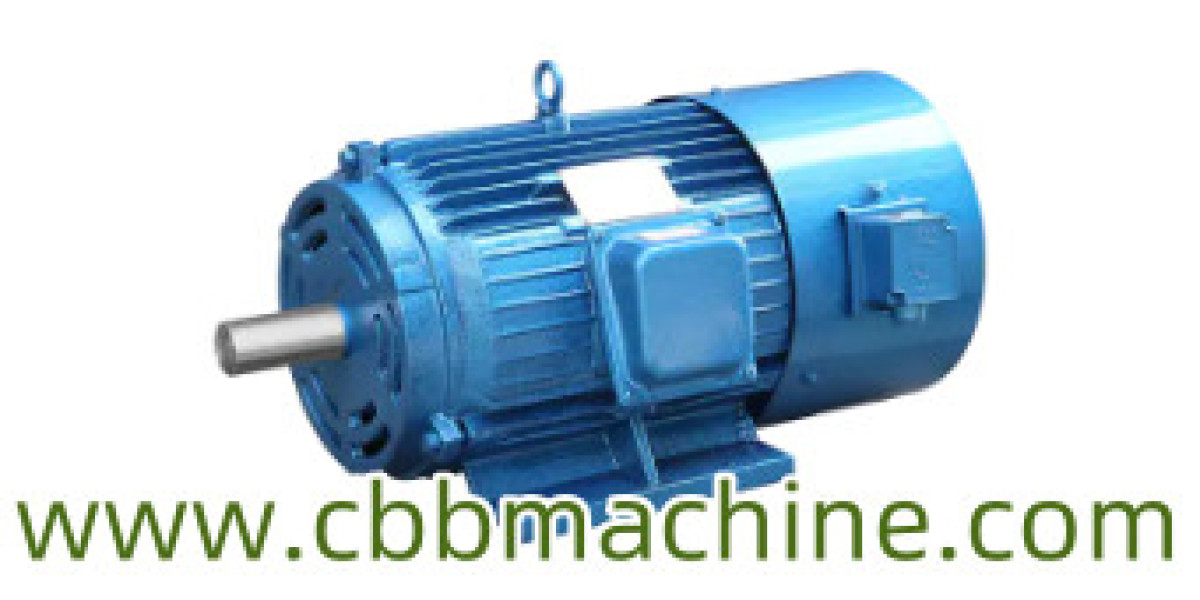The Advantages of Magnetic Powder Brakes in Industrial Machinery
In the world of industrial machinery, achieving precision, efficiency, and longevity is paramount. As manufacturing processes continue to evolve, so does the need for advanced systems that can provide reliable control over various operational parameters. One such system that has gained significant attention is the Magnetic Powder Brake. Known for its smooth operation, precise torque control, and durability, the Magnetic Powder Brake has become a crucial component in industries like printing, textile manufacturing, and metal processing.
But what exactly makes the Magnetic Powder Brake so valuable? Let’s explore its working principles, applications, advantages, and key factors to consider when choosing the right brake for your equipment.
What is a Magnetic Powder Brake ?
A Magnetic Powder Brake is a device designed to regulate the speed and torque of rotating machinery. It works by using magnetic powder, which is controlled by an electromagnetic field. When an electric current is applied to the stator, it generates a magnetic field that causes the powder to form a frictional connection, slowing down the rotor. The strength of the magnetic field directly correlates to the amount of braking force, allowing for precise control of the rotational speed and torque.
One of the key benefits of this braking system is that it operates without physical contact between the moving parts, reducing wear and tear. The system can adjust the braking force instantly, making it ideal for applications that require rapid response times and consistent tension control.
Applications of Magnetic Powder Brakes
The versatility of Magnetic Powder Brakes makes them suitable for a wide range of applications across different industries. Here are some of the most common sectors where they are used:
1. Printing and Packaging Industry
In the printing industry, maintaining consistent web tension is critical for high-quality results. Whether it’s printing on paper, plastic, or other materials, the Magnetic Powder Brake ensures that the material remains taut during the printing process. By offering precise tension control, the brake prevents issues like wrinkles, misalignment, and material waste, ultimately improving the quality of the final product.
2. Textile Manufacturing
Textile machinery often requires delicate handling of fabrics, threads, and yarns. Maintaining constant tension during processes like weaving and dyeing is essential to avoid material breakage or distortion. The Magnetic Powder Brake allows manufacturers to maintain uniform tension, ensuring that the fabric is processed smoothly and with the highest quality standards.
3. Metal Processing
In metal processing, such as coil winding and sheet rolling, it’s crucial to manage the tension on metal materials accurately. The Magnetic Powder Brake ensures that the metal is handled with precision, preventing issues like uneven rolling or tension buildup. This results in a smoother, more consistent process and improves the final quality of the metal sheets.
4. Paper Manufacturing
Paper mills use Magnetic Powder Brakes to regulate the tension in large rolls of paper as they are unwound and processed. Maintaining the correct tension ensures that the paper is cut evenly and without defects. The brake’s smooth and gradual braking action also helps reduce the risk of paper jams and other production issues, improving the efficiency of the manufacturing process.
5. Automotive Testing
In the automotive industry, Magnetic Powder Brakes are used in dynamometers and other testing equipment to simulate load conditions during vehicle performance testing. These brakes provide the precision and responsiveness needed to test vehicles under various operational scenarios, allowing engineers to analyze and improve vehicle design and performance.
Key Benefits of Using a Magnetic Powder Brake
1. Precise and Adjustable Torque Control
One of the standout features of the Magnetic Powder Brake is its ability to provide highly accurate and adjustable torque control. This is essential for applications that require constant tension and precise rotational speed, such as printing or textile manufacturing. The brake’s linear current-to-torque relationship allows operators to fine-tune the braking force, ensuring optimal performance in every operation.
2. Minimal Wear and Tear
Because Magnetic Powder Brakes use a contactless braking method, they experience less wear and tear compared to traditional friction-based systems. This reduces maintenance requirements, extends the life of the brake, and lowers the overall cost of operation. In industries where downtime is costly, this is a significant advantage.
3. Smooth Operation and Reduced Noise
The smooth application of braking force provided by the Magnetic Powder Brake ensures that machinery operates without jerking, shock loading, or excessive noise. This makes it ideal for applications where smooth and quiet operation is critical, such as in textile or paper manufacturing. The reduction in mechanical noise also contributes to a safer and more comfortable work environment.
4. Energy Efficiency
The Magnetic Powder Brake is designed to be energy-efficient, drawing minimal power to operate effectively. This makes it a sustainable choice for businesses looking to reduce their energy consumption and operating costs. Additionally, because the brake can be finely adjusted, it helps prevent unnecessary energy use during periods of low demand or minimal operation.
5. Enhanced Durability and Reliability
The construction of Magnetic Powder Brakes is built for durability. Made from high-quality materials such as aluminum alloy or steel, these brakes can withstand the rigors of heavy-duty industrial environments. Their reliable performance in high-load applications, such as conveyor systems or large textile machines, ensures that businesses can maintain smooth, continuous operation without frequent breakdowns.
How to Choose the Right Magnetic Powder Brake
Selecting the appropriate Magnetic Powder Brake for your machinery requires careful consideration of several factors:
Torque Range: Ensure the brake can handle the required torque levels for your specific application. Too much torque can lead to overheating, while too little will result in insufficient braking force.
Cooling Requirements: High-load applications may require additional cooling features to prevent overheating and ensure consistent performance.
Control Features: Depending on your needs, you may want a brake that offers digital or automated control for adjusting braking force during operation.
Size and Compatibility: Check that the brake fits within the available space on your machinery and is compatible with the system’s design.
Material and Construction: Choose a brake made from durable materials to ensure long-lasting performance under heavy use.








